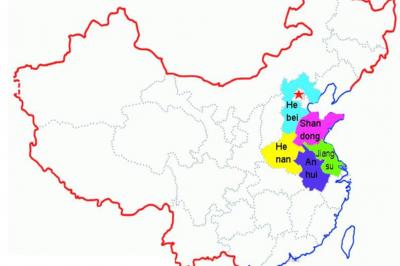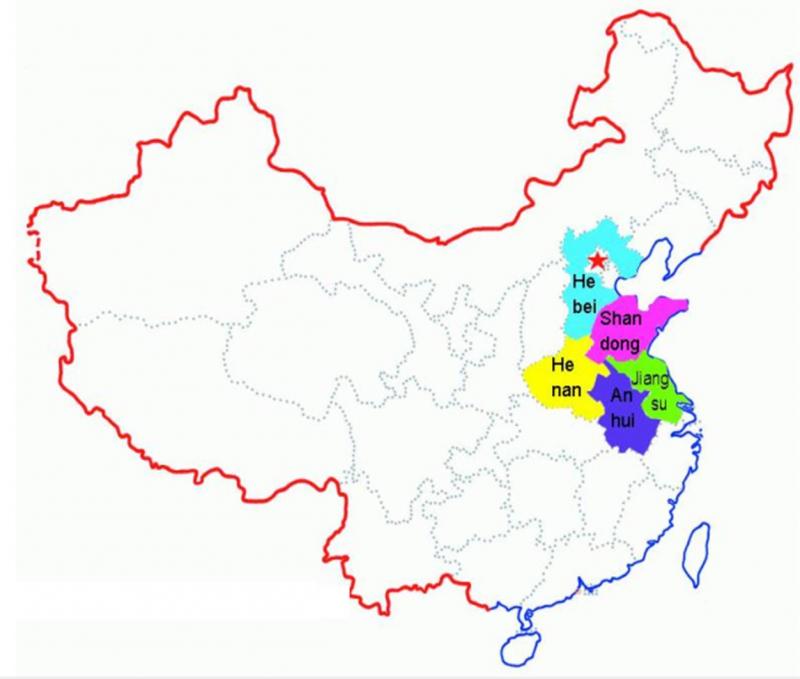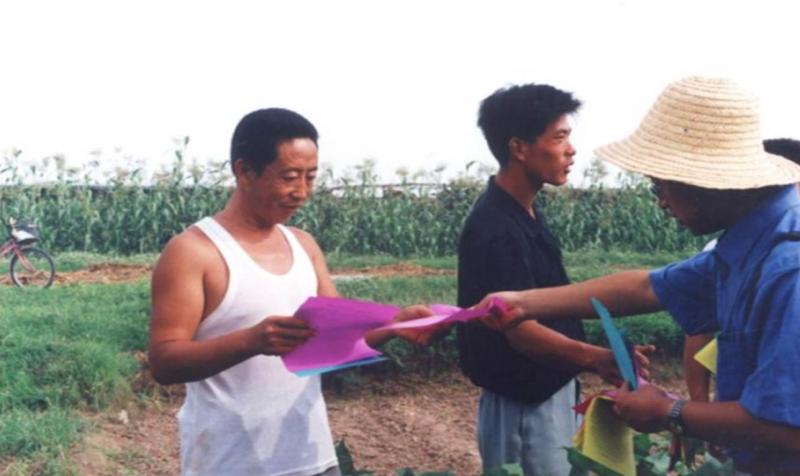Globally, 70% of freshwater is used for agriculture. According to the World Bank, in order to feed 9 billion people by 2050, agricultural production and water withdrawals will be increased by 60% and 15%, respectively. In many poor countries, agriculture is the most important economic sector. Unfortunately, it is also among the sectors most sensitive to climate change due to its high dependence, both directly and indirectly, on climate-induced conditions, such as droughts, floods, pests and epidemics. This case study presents an innovative way of tackling both agricultural production and climate change adaptation challenges through the two complementary projects at the time when China was just starting to prioritise climate change adaptation in the national policy agenda. One project sought to sustainably increase agricultural productivity, while the other one had the goal of enhancing adaptation to climate change in agricultural and irrigation management. The two projects were blended to be a combined operation. Both of them were implemented in China’s most important breadbasket, where climate change is expected to bring about rise in temperatures and changes in precipitation patterns, among others, that will harshly hit an already water-scarce area. A range of interventions was introduced, such as productivity-enhancing and water-saving agricultural practices; better management of irrigation water through locally-based organisations; and promotion of high-value crops to boost rural incomes. Ecosystem-based adaptation (EbA) measures, for instance creating shelterbelts around the farmland to improve water retention, reduce soil erosion while also attract bird species, were a substantial part of the ‘adaptation menu’ developed for the field implementation. These adaptation measures have helped increase yields as well as provide greater protection from droughts and other events. Therefore, the farmers were enthusiastic to adopt those practices. Although this was the first comprehensive effort on agricultural climate change adaptation in China, it ultimately resulted in the successful mainstreaming of climate change adaptation in agriculture in China’s 12th Five-Year Plan for Economic and Social Development (2011-2015).
The projects have provided extensive learning experiences for replication in other water and agricultural projects in China. This case study, therefore, could potentially inspire future development of climate change adaptation in agricultural sector in similar contexts worldwide.
Key lessons
- This case study has demonstrated that it is possible to retrofit an already on-going, large-scale agricultural irrigation project to integrate climate change adaptation focus. The positive results brought about from the combined projects have been realised by the key stakeholders, particularly the farmers and policy makers, on the improvements of agricultural productivity while saving water and the environment as well as responding to the climate change impacts. This is in fact a more cost-effective way to have a climate change adaptation project as an integral part of another project focusing on increasing agricultural water use efficiency, rather than implementing it as a stand-alone adaptation project.
- The objectives of both projects reflected that improved agricultural productivity was essential for better use of the country’s water. In addition, they recognised that in order to be sustainable, land and water management was necessary to help protect the environment. In this regard, there were substantial investments in EbA measures to improve the agroecosystem. These measures typically benefitted both the productivity and ecological balance; shelterbelts could reduce soil erosion, integrated pest management decreased the use of pesticides, crop residue mulching conserved soil moisture, and application of organic fertiliser reduced the need of chemical fertiliser, among others.
- Since climate change adaptation was relatively new in China at that time, the adaptation interventions introduced to the farmers were easily assimilated as they brought benefits already under the current climate conditions, and would be resilient to further changes. Many of those ‘no-regrets’ adaptation measures, including EbA, were familiar to agriculture and irrigation extension staff. Some, such as the tree shelterbelts, were even already being practiced in the project areas, and were expanded during the implementation. Those measures evidently increased the farm yields as well as reduced the climate risks. Therefore, once the farmers understood the climate change concept and after they witnessed the demonstrations, they enthusiastically adopted those practices.
- The activities on knowledge generation, scientific assessment and capacity building on climate change adaptation were crucial to the success. The projects received technical support from experts both from domestic institutions (including the Chinese Academy of Agricultural Sciences and Chinese Academy of Sciences) and abroad throughout the whole process; from assessment of climate change impacts, design of the adaptation measures tailored to specific agro-ecological and climatic zones, to demonstration of those interventions that bring benefits for wider adoption. All were instrumental to achieving the adaptation objectives.
- Stakeholder engagement is of great importance. The projects highlighted the participatory implementation by working with the farmers and their associations, scientific community, provincial and county level command agriculture development programme offices, and the water and forestry bureaus to develop a commonly agreed list of climate change adaptation interventions. Substantial effort was put into dissemination of information to civil society, farmers, extension staff, government officials and political leaders on the concept of climate change and the adaptation required to respond to such changes. Altogether, these contributed towards obtaining immense support to implement such pioneering initiatives and eventually achieving the mainstreaming goal into one of the country’s most significant development policies.










